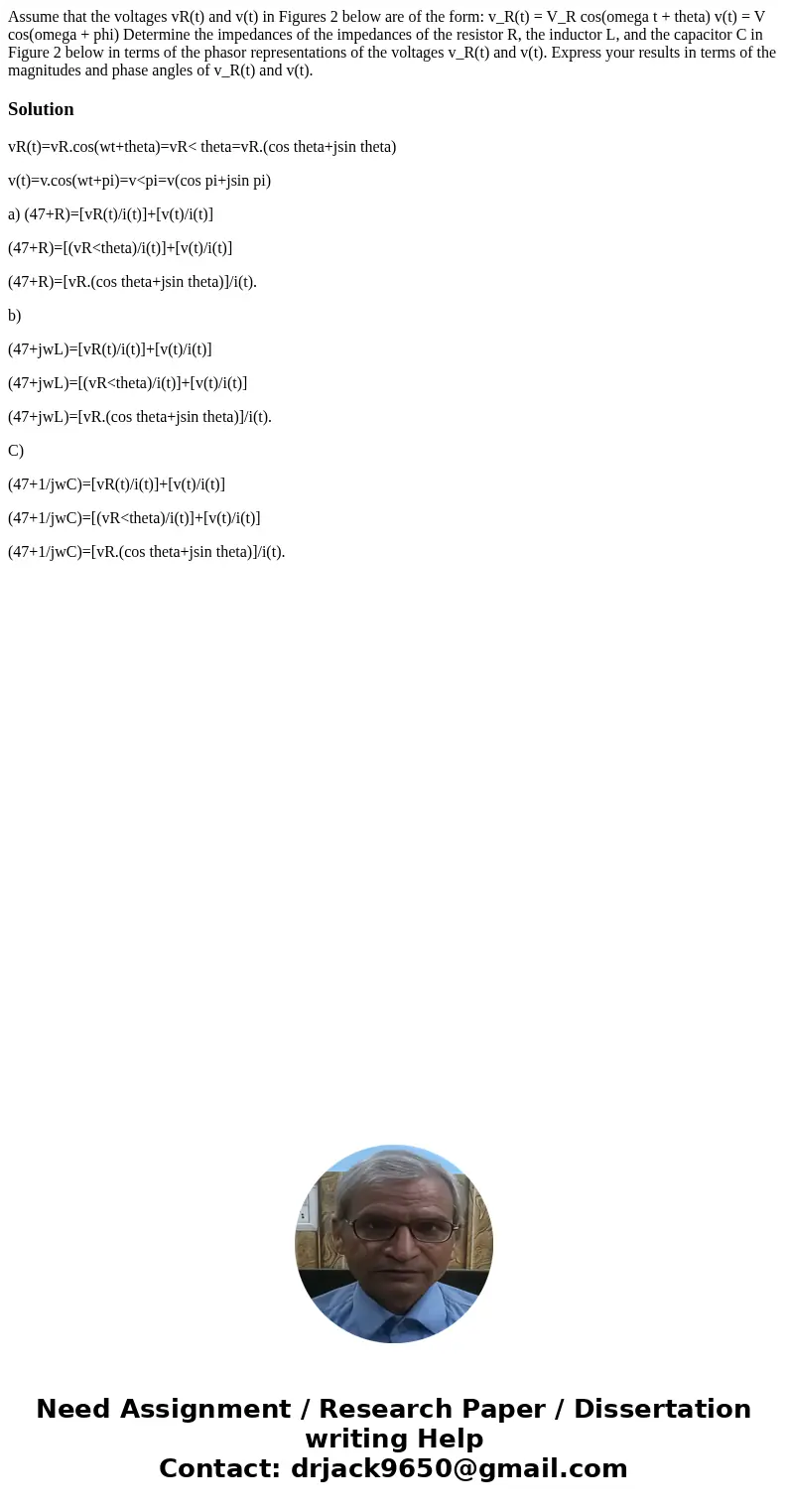Assume that the voltages vRt and vt in Figures 2 below are o
Assume that the voltages vR(t) and v(t) in Figures 2 below are of the form: v_R(t) = V_R cos(omega t + theta) v(t) = V cos(omega + phi) Determine the impedances of the impedances of the resistor R, the inductor L, and the capacitor C in Figure 2 below in terms of the phasor representations of the voltages v_R(t) and v(t). Express your results in terms of the magnitudes and phase angles of v_R(t) and v(t).
Solution
vR(t)=vR.cos(wt+theta)=vR< theta=vR.(cos theta+jsin theta)
v(t)=v.cos(wt+pi)=v<pi=v(cos pi+jsin pi)
a) (47+R)=[vR(t)/i(t)]+[v(t)/i(t)]
(47+R)=[(vR<theta)/i(t)]+[v(t)/i(t)]
(47+R)=[vR.(cos theta+jsin theta)]/i(t).
b)
(47+jwL)=[vR(t)/i(t)]+[v(t)/i(t)]
(47+jwL)=[(vR<theta)/i(t)]+[v(t)/i(t)]
(47+jwL)=[vR.(cos theta+jsin theta)]/i(t).
C)
(47+1/jwC)=[vR(t)/i(t)]+[v(t)/i(t)]
(47+1/jwC)=[(vR<theta)/i(t)]+[v(t)/i(t)]
(47+1/jwC)=[vR.(cos theta+jsin theta)]/i(t).

 Homework Sourse
Homework Sourse